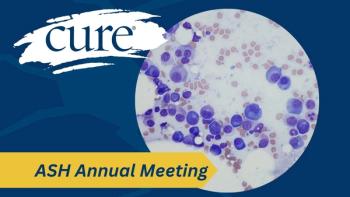
MMRF: Sharing Data, the "New Currency" in Precision Medicine
Perhaps it makes sense that the best formula for fighting cancer came not from scientists, or industry, or government, but from twin sisters.
Kathy Giusti and Karen Anderson share the same genome. Today, the approach they built from the ground up to take on multiple myeloma — which Kathy learned she had in 1995 — is the model for the Obama administration’s embrace of precision medicine and its “moonshot” against cancer.
Through the Multiple Myeloma Research Foundation (MMRF), the sisters created an ethos of breaking down barriers that separate academic researchers and industry. They seek collaboration to share genetic data and knowledge, to speed the march toward new therapies, and in time, cures.
“Our model has always been that way,” said Sharon Saias, vice president of marketing for MMRF, who said Giusti’s remaking of the research paradigm has not only changed the way the government thinks about cancer research, “but precision medicine across all diseases.”
MMRF is a leader in data collection, including the CoMMpass study, which seeks to examine the disease’s behavior over time. Patients donate tissue samples at diagnosis and whenever the disease changes for up to 10 years. Three years in, CoMMpass is bearing its earliest fruits, Saias said. Abstracts were presented at the American Society of Hematology (ASH) in December 2015.
“People are really starting to understand what CoMMpass can do,” Saias said. While tissue collection does place some burden on participants, “patients are seeing the value.”
Already, CoMMpass is showing the survival value of stem cell transplants, a treatment that Giusti was able to obtain thanks to her twin. CoMMpass promises to identify different disease characteristics between racial groups. But Saias said its greatest value will be to track how the many therapies now available perform in different patients; in turn, this will guide treatment decisions in the future, giving doctors insight into how to use different therapies in combination.
Patients Now Have Multiple Options
When Giusti was diagnosed more than 20 years ago, multiple myeloma hadn’t seen a new therapy in decades. MMRF has supported research for 10 different therapies that have received FDA approval since its founding in 1998.
Three new therapies were approved at the end of 2015: Darzalex (daratumumab), Empliciti (elotuzumab) and Ninlaro (ixazomib). The first two are monoclonal antibodies, representing a new class in the arsenal against MM, offering particularly good news for patients whose disease has relapsed or not responded to other treatment.
Drug approvals are not the only milestones. CoMMpass achieved its goal of enrolling its 1,000th patient in September 2015, Saias said.
“Some doctors are saying, ‘Why stop now?’” To continue enrolling participants, she said, “We just have to get the funding.”
CoMMpass just a part of MMRF’s three-step “end-to-end” strategy; collecting and sharing data is what the groups calls “the new currency” in the fight against cancer. Building a data bank, through its own efforts and through alliances with others (such as academic centers), comes first. The second step, which MMRF calls the Learning Network, is its system of distribution for sharing the information with researchers.
Finally, MMRF supports clinical research through the Multiple Myeloma Research Consortium, the network of researchers it funds who regularly present results at major conferences, including ASH.
As Saias explained, each step connects with the others. “The more data we have, the better decisions we can make on what clinical trials to bring to market,” she said.
Have attitudes about data sharing changed since MMRF started?
“Kathy will say there’s still a long way to go,” Saias said, but there’s been movement — and attention from the White House certainly raises awareness about the importance of taking part in data collection. Much work remains to educate patients, however.
There’s talk of a national data registry, Saias said. That level of collaboration among academia, government, and industry would be a huge undertaking. Compared to where MMRF was 11 years ago, she said, “Things are moving in the right direction.”




